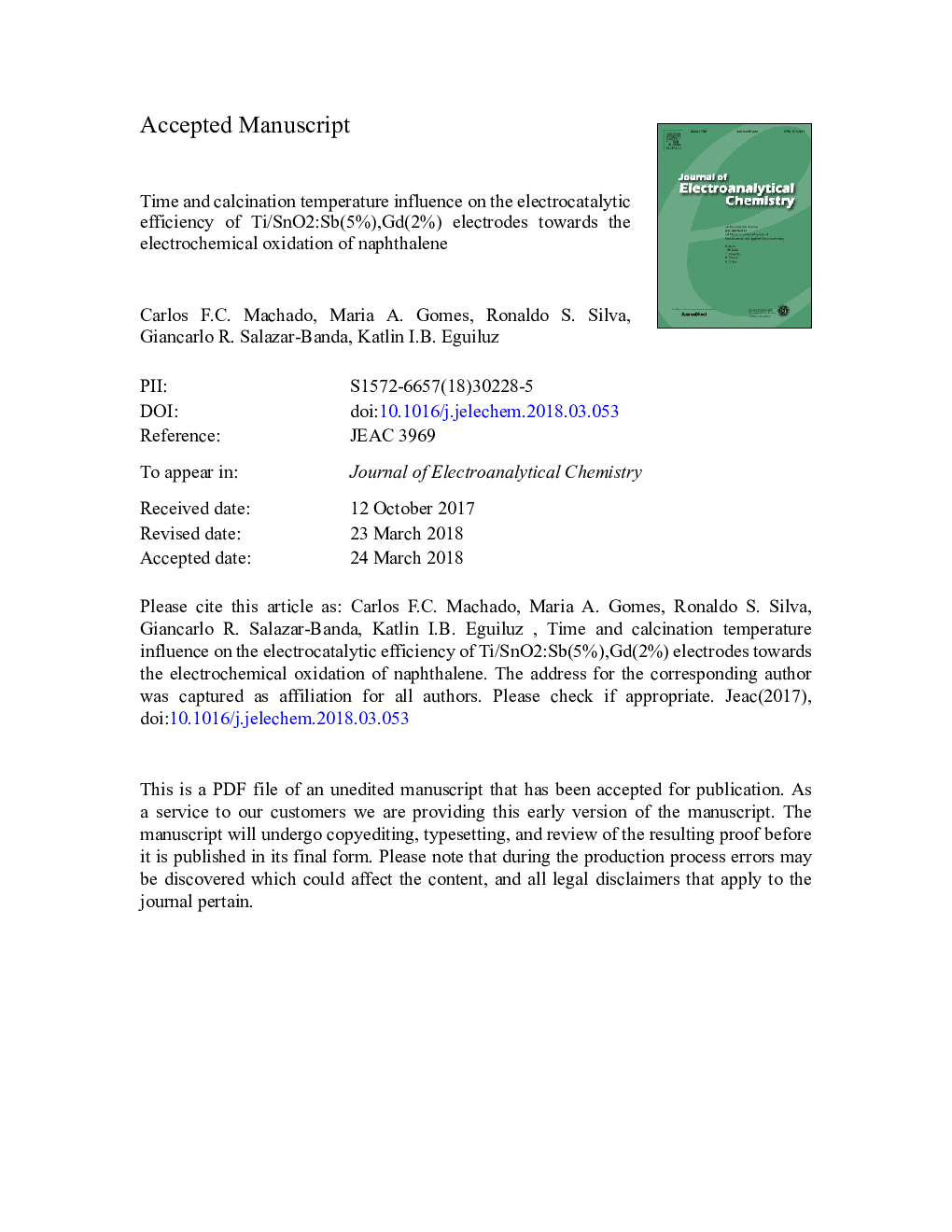| Article ID | Journal | Published Year | Pages | File Type |
|---|---|---|---|---|
| 6661944 | Journal of Electroanalytical Chemistry | 2018 | 41 Pages |
Abstract
Produced water is the largest volume wastewater associated with petroleum and gas production. Due to its diverse composition and large volume, produced water treatment is very challenging in order to avoid permanent or significant damages to the environment. On the other hand, the anodic material stability and the electrocatalytic properties are crucial for improved pollutant degradation efficiencies in electrochemical wastewater treatment. Here, we report the development of Ti/SnO2:Sb(5%),Gd(2%) electrodes by the polymeric precursor method, also known as Pechini method, for use in naphthalene electro-oxidation. The influence of the calcination time and temperature in the electrodes synthesis was investigated focusing on obtain an enhanced material with improved efficiencies in naphthalene oxidation. Thus, the Ti/SnO2:Sb(5%),Gd(2%) electrodes were calcined at 350, 400 and 450â¯Â°C during 1, 2 and 3â¯h for each temperature. Both temperature and time presented influence on the electrode electrocatalytic efficiency during naphthalene degradation, with emphasis on the calcination temperature influence. The most efficient electrodes are those calcined at 400â¯Â°C for 2â¯h, which degrade around 97% of the pollutant and reduce 86% of total organic carbon after 2â¯h of electrolysis at 2.0â¯V versus reversible hydrogen electrode. Besides that, they present the greatest rate constant coefficient of kâ¯=â¯1.41â¯molâ1â¯Lâ¯minâ1 and the greatest voltammetric charge density (13.75â¯mCâ¯cmâ2) according to cyclic voltammetry measurements. Additionally, all the synthetized electrodes show high physical and electrochemical stability.
Related Topics
Physical Sciences and Engineering
Chemical Engineering
Chemical Engineering (General)
Authors
Carlos F.C. Machado, Maria A. Gomes, Ronaldo S. Silva, Giancarlo R. Salazar-Banda, Katlin I.B. Eguiluz,
